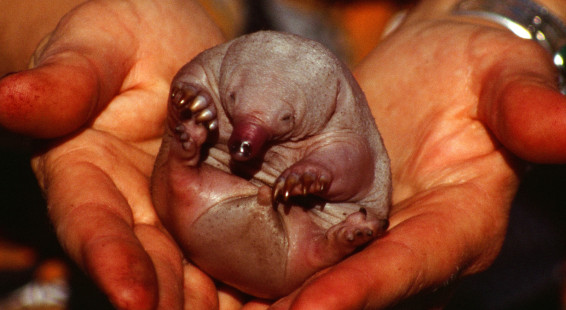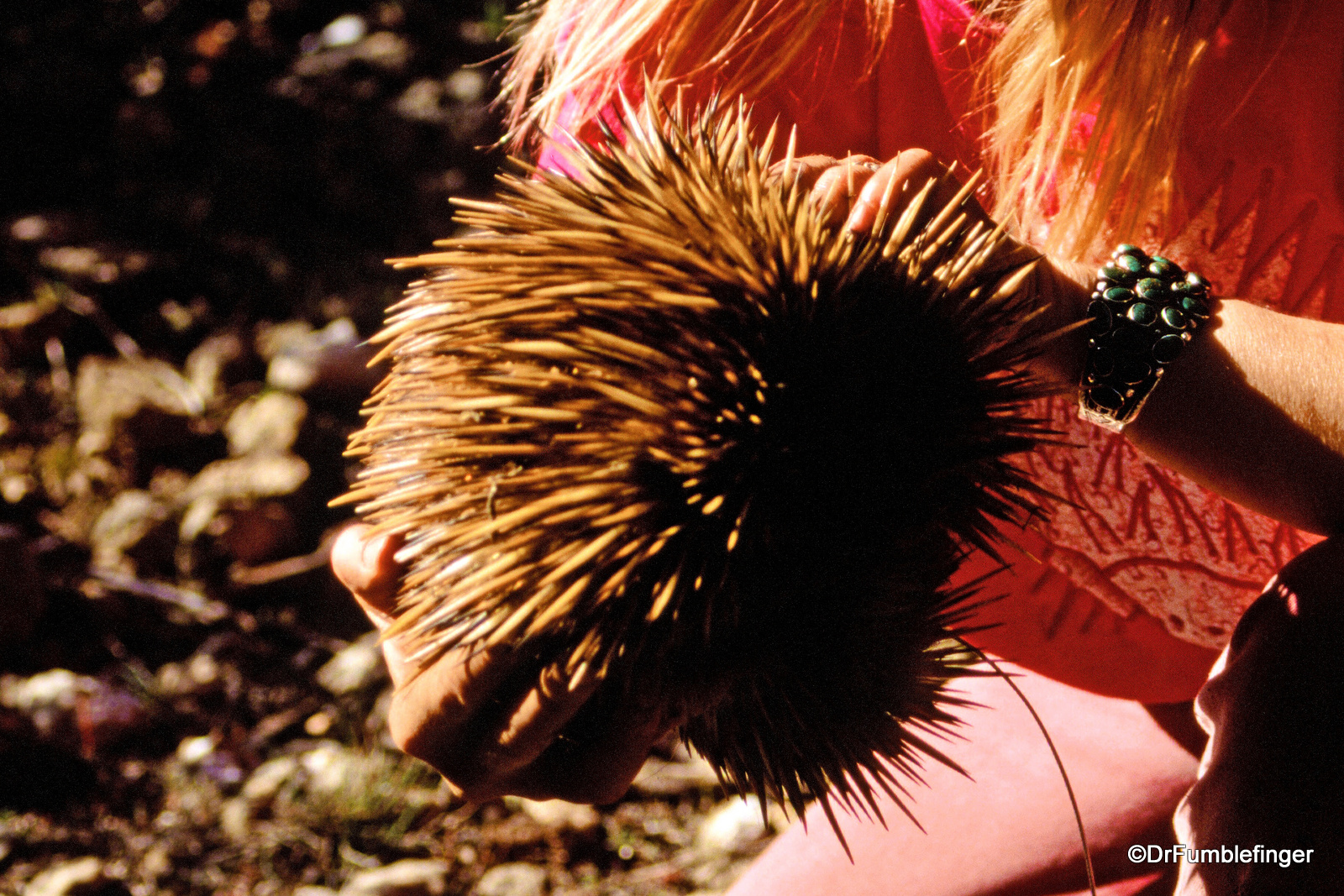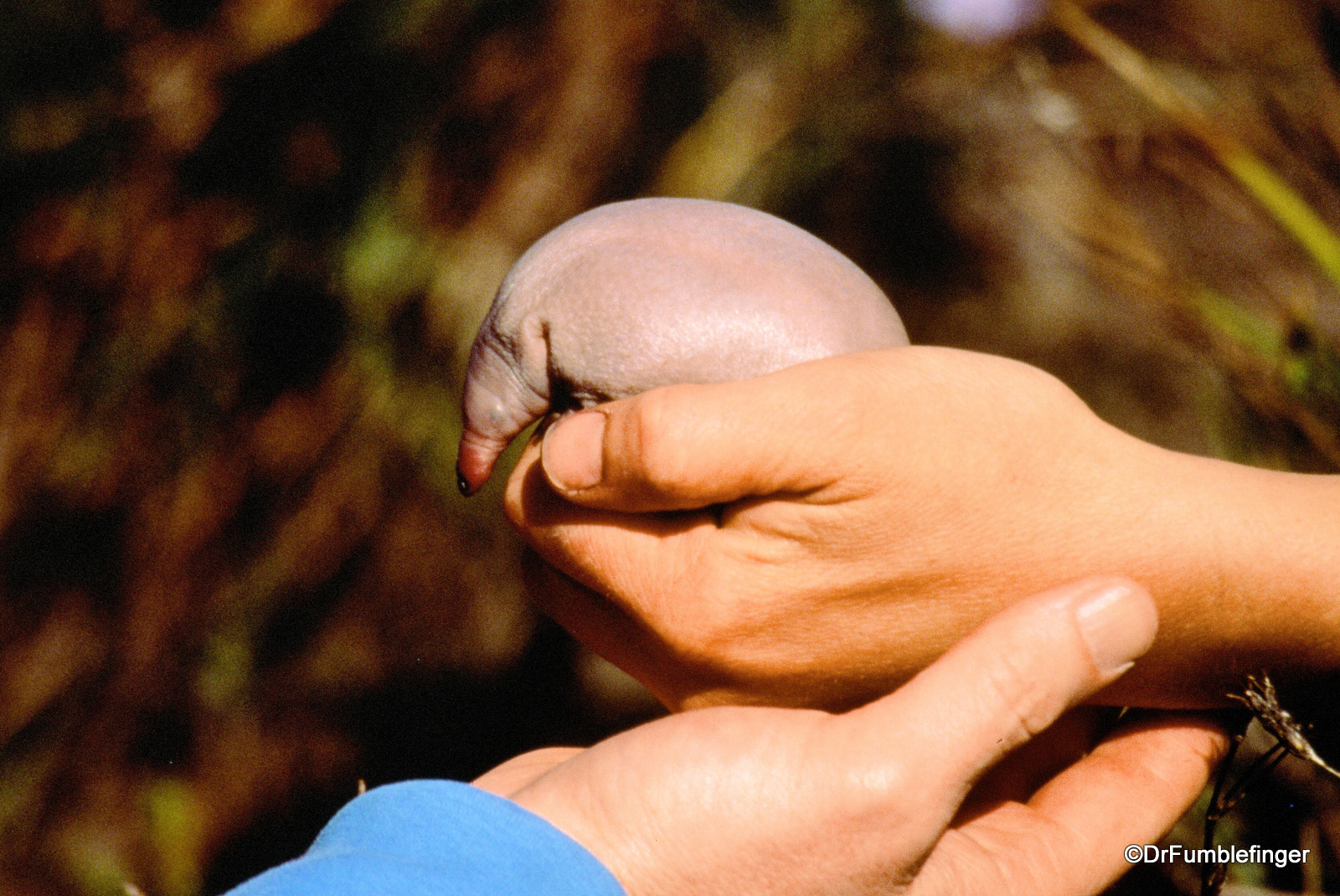
Today’s highlighted photo features a baby short-beaked echidna known as a “Puggle”. It likely is the rarest photo of an animal I’ve ever taken in the wild (note: this is not a zoo photo). Puggles are carried in their mother’s pouches and it’s rare to know the mother is with child unless you’ve closely followed her (in this case by a group of field biologists on Kangaroo Island, using radiotelemetry).
Echidnas, also known as spiny anteaters, are egg-laying mammals (monotremes) found only in Australia and New Guinea. The female lays a small soft-shelled leathery egg which is deposited into her belly pouch. The young echidna hatches in about 10 days, the youngster sucking on milk from one of two milk patches (monotremes do not have nipples). The series of photos shows field scientists removing a young baby echidna (also known as a “puggle”) from its mother’s pouch, something rarely photographed (the puggle was weighed and measured, as was the mother from whom a blood sample was also taken). The puggle at this point lacks hair and spines and is effectively blind, but when placed back in its mother’s pouch will continue to grow and develop sharp spines at about 45 days old. The mother then digs a burrow to deposit the spiny Puggle and continues to suckle it until it is weaned at about seven months.
Echidnas are small solitary mammals covered with broad but sharp spines and coarse hair. Their diet consists largely of ants and termites, but they are not in any way related to anteaters of Central and South America, nor are the related to other spiny mammals like porcupines or hedgehogs. They have very short, strong limbs with large heavy claws, and are powerful diggers, all the better to uproot anthills or termite mounds with. Echidnas have tiny mouths and toothless jaws. The echidna feeds by tearing open soft logs, anthills and the like, and using its long, sticky extensible tongue, which protrudes from its snout, to collect insects. Echidnas live up to 50 years in the wild.
So there it is for you, photos of a Puggle, removed from its mother’s pouch.
(Click on thumbnails to enlarge, right arrow to advance slideshow)




